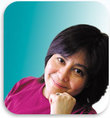|
I was saddened to hear about a woman who went hiking in Griffith Park with her dog during record heat, suffered heat stroke and died. Why did she continue to hike despite the unusually hot weather and increased health risk? Lack of discernment? A colleague of mine decided on a whim to run up to Mt. Wilson one fine day, without water or jacket, and almost didn’t make it. He had to crawl to the ranger station for water and rest. Although he was a long distance runner who knew the general precautions to take, on this particular occasion he didn’t follow the minimal rules for safety.
Years ago, I had the opportunity to meet Lynn Jennings who ran in the Alhambra Moonlight 8K as the premiere elite women’s runner. She won a bronze medal at the Barcelona Olympics in the 1500 meters race. She was a remarkable athlete and never had a serious injury during her career. During a running clinic at the local high school, she said she always listened to her body and knew when to take it easy and when to push to a new level. How many elite athletes can make her claim of no serious injuries during their careers? How can you develop this ability to improve discernment so you make better decisions which may make the difference between life and death? One easy way is to take a walk and notice your surroundings. Deliberately noticing how things are and not how they should be is another approach to improving your discernment ability. Too often an injured person wants to insist their body move as it used to, rather than how it is able to move now. Sometimes just giving your body permission to behave differently is all it takes to accentuate the healing process. Perceiving a more subtle sensation could be a more effective way to prevent injury. Oftentimes, I tell patients to pay attention to increased exertion or increased effort with breathing, rather than waiting to feel pain with exercise. I disagree with coaches who say, “No Pain, No Gain,” because pain can signal damage to cells. I think the more aware you are of your body, the better you can tell when you are getting close to your limit and need to stop. Qigong, an ancient Chinese form of exercise, uses simple movements but helps in cultivating awareness of body sensations, movements, postures, temperatures, textures and organ function. I use Qigong to bring changes in one’s awareness of body asymmetries, bringing more balance between the two sides of the body and showing the connection between mind and body. Mind and body should work together for maximum benefit. Better control and discipline can be achieved when attention is placed at either end. Sometimes we can get away with emphasis on either mind or body. But think how much more potential can be realized when there is a balance between the two.
0 Comments
Your comment will be posted after it is approved.
Leave a Reply. |
Sheila’s BlogI focus on the topics you care about most. Categories
All
Archives
February 2022
|
|
55 S. Raymond Ave. Suite 100
Alhambra, CA 91801 Main Phone: (626) 576-0591 Alternate Phone: (626) 538-3966 Fax: (626) 576-5890 Email: [email protected] |
© 2015 Yonemoto Physical Therapy. ALL RIGHTS RESERVED.
|


 RSS Feed
RSS Feed